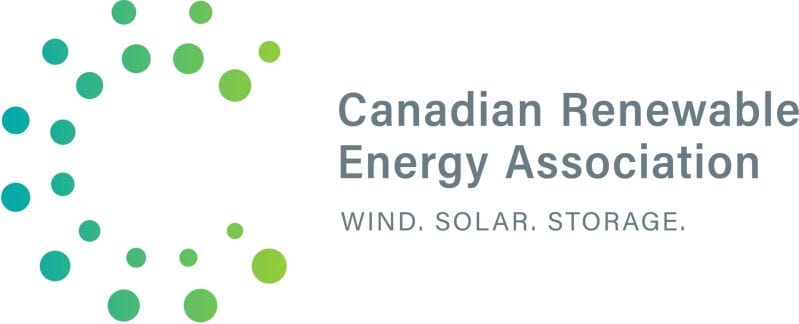Solar panel setups are soaring in popularity as more households and businesses recognize their environmental and economic benefits. Yet, with this rise in adoption comes the essential task of understanding common issues that can arise.
Addressing these challenges promptly and effectively ensures we harness the sun’s power to its fullest potential. Let’s dive into the world of solar panel troubleshooting and learn how to keep our systems running efficiently.
Common Issues with Solar Panel Setups
While solar panels are highly lauded for their benefits, they occasionally encounter challenges that hinder their performance. The following is a look at some prevalent issues faced by solar-powered homes.
1. Shading and Obstructions
Shading is challenging where sunlight is prevented from reaching the solar panels due to obstructions. This can significantly hinder the energy production capability of the affected panels.
| Signs & Symptoms |
| Uneven energy production throughout the day. |
| Specific panels or cells produce less energy than adjacent ones. |
Troubleshooting Steps:
- Monitor Production: Use monitoring tools to observe energy production at different times of the day.
- Inspect Physically: Look for visible shadows on the solar panels during peak sunlight hours. This can help identify the exact source of obstruction.
- Address Obstructions: Consider pruning if the obstruction is from trees. If from structures like chimneys, evaluate the feasibility of relocating the panels.
- Repositioning: If obstructions are permanent, you need to adjust the positioning or tilt angle of the solar panels to get maximum sunlight exposure.
2. Soiling and Dirt Buildup
Environmental factors cause dirt and debris to settle on the solar panels. This layer of dust and dirt can obstruct sunlight, reducing panels’ efficiency.
| Signs & Symptoms |
| Visible dirt or grime on the surface of panels. |
| Decline in energy output compared to clean panels. |
Troubleshooting Steps:
- Routine Inspection: Visually inspect the panels for noticeable dirt or debris at regular intervals.
- Gentle Cleaning: Clean the panels with lukewarm water and a soft cloth or brush. Ensure not to scratch the surface.
- Scheduled Maintenance: Depending on the environment (dusty areas, bird activity), set up a cleaning routine, be it monthly or quarterly.
- Preventive Measures: Consider installing bird spikes or protective coatings in areas prone to heavy dust or bird activity.
3. Inverter or System Errors
The inverter converts the DC generated by the solar panels into AC. If it encounters issues, the entire energy production could halt.
| Signs & Symptoms |
| Error messages or alerts are displayed on the inverter. |
| No power output even in optimal sunlight conditions. |
Troubleshooting Steps:
- Error Codes: Note any error messages. Consult the user manual for these codes, as they can offer initial diagnostic clues.
- Reset the System: Sometimes, restarting the inverter can resolve transient issues.
- Connection Check: Ensure all connections, wires, and fuses related to the inverter are intact.
- Seek Professional Advice: If the problem persists, it’s advisable to call in a technician. Inverters contain sophisticated electronics that could require professional handling.
4. Low Energy Production
Over time, panels can degrade or face issues that cause them to produce energy below their expected efficiency.
| Signs & Symptoms |
| Consistent decrease in daily energy output. |
| Aging panels (typically older than 20-25 years). |
Troubleshooting Steps:
- Record Keeping: Record your daily or monthly energy yields regularly. A sustained decline should raise alarms.
- External Factors: Before assuming panel degradation, rule out shading, soiling, or inverter issues.
- Panel Testing: Use a solar meter or similar tools to test the efficiency of individual panels.
- Consult Professionals: If the panels are significantly old or showing visible signs of wear, consider getting a professional assessment regarding potential repair or replacement.
Diagnosing and Troubleshooting Each Issue
Understanding the methods for diagnosing and troubleshooting your solar panel system is essential to maximize its efficiency. Below are valuable insights into addressing common issues:
Identifying Shading and Addressing Obstructions:
- Monitoring Energy Production: Use solar monitoring systems to observe energy production at different times of the day. A sudden dip in output can indicate shading.
- Physical Inspection: Conduct a visual inspection of your solar panels, especially during peak sunlight hours. Look out for visible shadows.
- Identify Obstruction Sources: Recognize the sources causing the shadows – be it trees, buildings, chimneys, or other structures.
- Addressing the Obstruction: Depending on the source:
- Trees: Consider pruning or trimming.
- Temporary Obstructions: Remove items like fallen branches or other temporary structures.
- Permanent Structures: Evaluate the feasibility of relocating the panels or adjusting their angles.
- Use Technology: Some modern systems have shade analysis tools. Utilize them for more precise diagnostics.
Cleaning Methods for Soiling and Dirt
| Cleaning Methods | Procedure |
| Water Rinse | Simply spray the panels with water. Ideal for light dust or pollen. |
| Soapy Water | Mix mild detergent with water. Use a soft cloth or sponge to clean the surface gently. Rinse thoroughly afterward. |
| Specialized Solar Panel Cleaning Solutions | Commercially available and tailored to break down common panel residues without harming them. |
| Automated Cleaning Systems | Systems that can be installed to periodically clean the panels especially useful in very dusty areas or large installations. |
| Professional Cleaning Services | Hiring professionals who specialize in solar panel cleaning, ideal for ensuring safe and thorough cleaning. |
Actions to Take for Inverter or System Errors:
- Check Display: Start with the inverter’s display. Many inverters provide error codes or messages to hint at the problem.
- Resetting: Sometimes, a simple restart can resolve the issue like many electronics. Turn off the inverter, wait a few minutes, and then turn it back on.
- Connection Inspection: Ensure all cables and connections between the panels and the inverter are intact and secure.
- Manual Reference: Refer to the user manual for the inverter. These manuals contain a troubleshooting section that can guide you through common issues.
- Professional Assistance: If you can’t diagnose the issue or if the problem persists, it’s time to call in a technician or a professional.
Measures to Improve Energy Production:
Solar panels could produce energy below their capacity for various reasons, including aging, accumulated wear and tear, or external factors. This is how you can enhance their efficiency:
- Regular Maintenance: Solar panels need regular check-ups like any equipment. Clean them, ensure all connections are intact, and address minor issues before escalating.
- Optimal Panel Positioning: Ensure that the panels are positioned at an angle where they can absorb maximum sunlight. Adjusting their tilt according to the season can make a difference.
- Upgrade Equipment: Upgrading outdated inverters or adding solar optimizers can boost the performance of your system.
- Panel Coolers: In areas with extreme heat, consider installing panel coolers or sprinkler systems that spray cool water to reduce their temperature.
- Monitoring & Analysis: Use monitoring tools to check performance regularly. Analyze the data to detect any anomalies or gradual declines in output.
- Professional Audit: Every few years, consider having a professional audit of your solar setup. They could find issues or areas of improvement that take time to be obvious to the untrained eye.
Regular Maintenance: Why It’s Necessary
Maintaining solar panels regularly is akin to servicing your car; it ensures optimal performance and longevity. Below is a condensed overview of why it’s indispensable:
| Benefits of Periodic Check-ups | Explanation |
| Peak Energy Output | Clean panels absorb sunlight efficiently, maximizing energy generation. |
| Longevity | Regular maintenance prevents premature wear and tear. Thus, extending panel life. |
| Issue Detection | Early identification of minor issues prevents major and costly damages. |
| Warranty Adherence | Regular upkeep aligns with warranty requirements, and thus, safeguarding coverage. |
| Safety | Proper maintenance minimizes electrical hazards. |
| Property Value | Well-maintained panels can boost property resale value. |
When to Call a Solar Panel Professional
Though solar panel systems can be maintained through simple DIY methods, there are instances where professional expertise is indispensable.
Limitations of DIY Solutions:
- Knowledge Gaps: Mistakes or oversights can occur without specialized knowledge.
- Safety: Working with electrical systems and at heights can be hazardous.
- Lack of Tools: Specific tools are needed for repairs or checks.
- Warranty: DIY fixes could risk voiding the warranty.
Scenarios for Professional Solar Assistance:
- Inverter Errors: Persistent inverter error messages or no display.
- Significant Production Drops: If panels show drastic energy production decreases.
- Physical Damage: Visible damage to panels or system components.
- Electrical Issues: Any sparking or unusual sounds from the system.
- Upgrades: When considering system expansion or technological upgrades.
Revamp Your Solar Panel Setup for Home
In essence, your solar panel setup is a blend of technology and nature, harmoniously working to provide sustainable energy. Like any valuable asset, a mix of personal care combined with professional touch-ups ensures it remains a lasting, efficient powerhouse. Embrace both as you contact and consult us at MAG Solar, and your solar setup will shine brightly for years.
Frequently Asked Questions
- co-Friendly: Reduces carbon emissions.
- Cost Savings: Decreases electricity bills.
- Property Boost: Increases home resale value.
- Independence: Reduces reliance on utility providers.
- Tax Incentives: Many regions offer rebates and credits for installation.
- Low Upkeep: Requires minimal maintenance once installed.
- Reliability: Offers consistent energy generation, unaffected by utility price hikes.
- Sustainable: Harnesses an inexhaustible energy source, ensuring long-term supply.
You can go completely off-grid with solar panels, but it involves several considerations:
- Solar Array Size: Must meet all energy needs, even during low sunlight periods.
- Battery Storage: Essential for nighttime or cloudy days.
- Backup Power: A generator or alternative for extended low-sunlight periods.
- Energy Efficiency: Opt for efficient appliances to reduce energy demands.
- Initial Costs: Comprehensive setup can be expensive upfront.
- Maintenance: Regular checks, especially for batteries.
- Regulations: Some areas can have restrictions or permit requirements.







